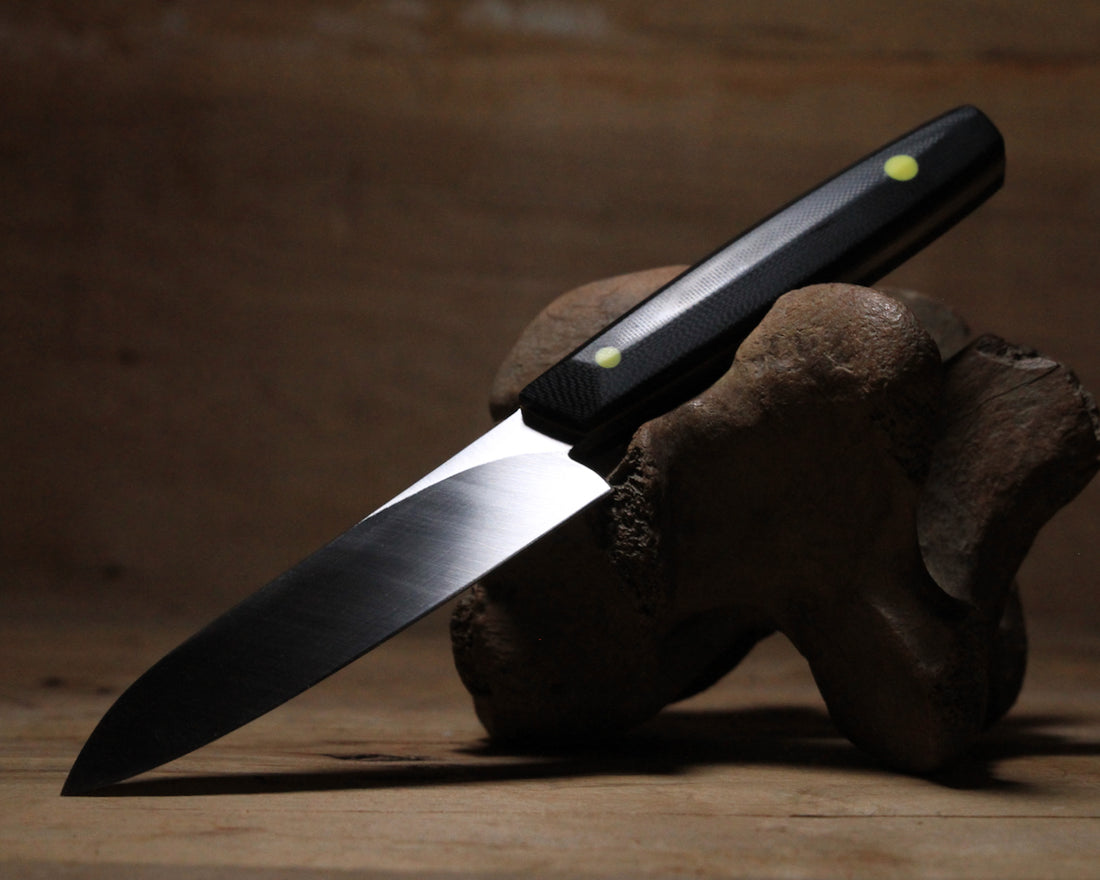I'm working on a run of 20 knives right now. It's the biggest run of knives that I've ever done but I think that this is probably the best way to increase the efficiency of Rainy Day Forge, located in Winnipeg, Manitoba.
The issue with using Stainless steel is heat treatment. I have a kiln which is a necessary tool to be able to process AEB-L but now I have to experiment with the barrier to inhibit decarb of the steel.
When metal reaches high temperatures, in excess of 1400'f, oxygen will begin to leach out carbon atoms from the steel. This is bad because, carbon, in combination with iron (and often, other bonding elements such as chrome) is what helps give steel its crystalline structure and hardness. Leach out too much carbon and your steel wont hold an edge and will dull quickly.
So, how do you avoid this from happening? An oxygen free kiln? Well, essentially yes. There are kilns on the market where the chamber can be flooded with Argon gas. This stops the oxygen from entering the kiln and leaching out the carbon from the steel. What else?
There are a few other options!
Stainless steel foil can be purchased in roll or pouch form. The knives are placed inside the pouch and the minute amount of oxygen in the pouch does very little damage. I've even placed a small piece of paper in the pouch so that the oxygen is consumed as it burns.
There are also products that can be applied to the steel to inhibit the leaching too. Condursal is one option. It's quick to dry but it stinks like a dozen 12 year old girls putting on nail polish. It's definitely an end of day application and good ventilation is highly recommended. Unless you're a 12 year old girl.
And then there's ATP 641 which is a clay that can be coated onto the knives. The downside is that the clay takes longer to dry. If you place it in the kiln when there is still huminity in a clay like this, the water evaporates too quickly and the coating simply falls off the blade.
On my run of knives, I've decided to use the clay. I purchased a large amount of it and it will serve me for a long time. Yesterday, I decided to try an experiment by heating up the blades with a torch and then submerging them into the bucket of ATP. The clay would react in 2 ways.
If the knife was at just the right temperature, the clay would bond to the exterior of the knife and create an nice even coating. Awesome! If the blade was a little on the hot side, the moisture in the clay would steam off quickly and create a pitted layer of clay. If that happened, I would spread excess clay towards that area to leave a nice smooth coating.
So far, I think this experiment is working well. No stink. Quick application. Reduced dry time for the clay.
I'll be checking on the blades today and I'll probably play it cautiously and wait another day to make sure that the clay is truly dried and bonded to the surface of the steel. But, if I was rushed, I would try to heat treat the blades.
